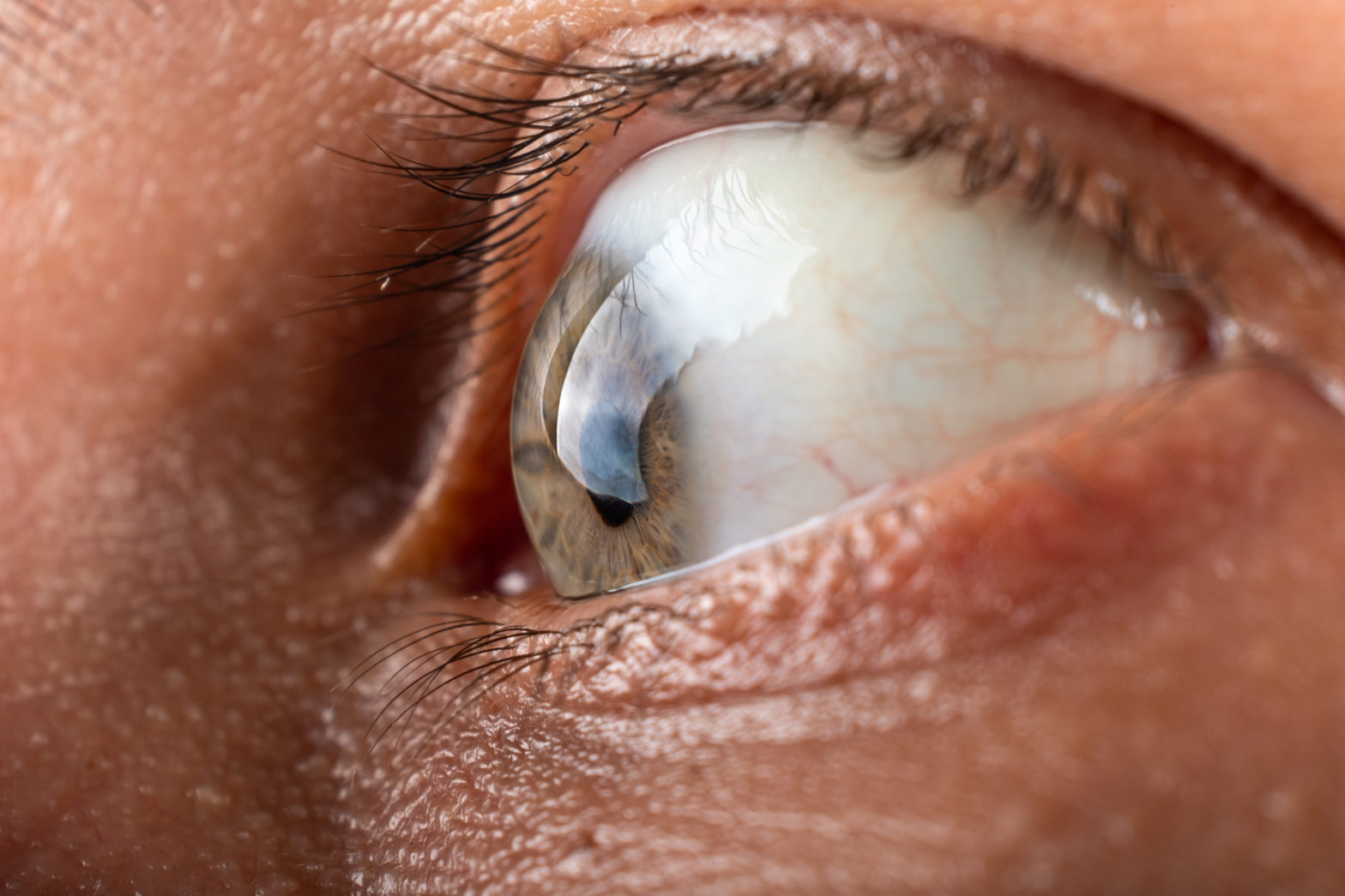நம் கண்களைப் பற்றி சிந்திக்கும்போது, வண்ணங்கள், வடிவங்கள் மற்றும் நம்மைச் சுற்றியுள்ள உலகத்தை உணரும் அவற்றின் திறனைப் பார்த்து நாம் அடிக்கடி வியக்கிறோம். ஆனால் இந்த அற்புதத்திற்குப் பின்னால் துல்லியமாகச் செயல்படும் ஒரு சிக்கலான வழிமுறை உள்ளது. இந்த சிக்கலான செயல்பாட்டில் முக்கியமான பங்கேற்பாளர்களில் கருவிழி மற்றும் இந்த மாணவர், கண்ணுக்குள் எவ்வளவு ஒளி நுழைகிறது என்பதைக் கட்டுப்படுத்த சரியான இணக்கத்துடன் செயல்படும் இரண்டு கட்டமைப்புகள். ஒன்றாக, அவை பார்வையின் வாயில்காப்பாளர்களை உருவாக்குகின்றன, ஒளி உட்கொள்ளலைக் கட்டுப்படுத்துகின்றன மற்றும் நமது கண்கள் மாறுபட்ட சூழல்களுக்கு ஏற்ப மாறுவதை உறுதி செய்கின்றன. அவற்றின் கண்கவர் செயல்பாடுகளை உற்று நோக்கலாம், அறிவியல், கலைத்திறன் மற்றும் அவற்றின் செயல்பாடுகளுக்குப் பின்னால் உள்ள கவிதையை கூட ஆராயலாம்.
ஐரிஸ்: கண்ணின் கலைஞர்
தி கருவிழிவானவில்லின் கிரேக்க தெய்வத்தின் பெயரிடப்பட்ட இது, கண்ணின் வண்ணமயமான பகுதியாகும். அதன் துடிப்பான நிறங்கள் - அடர் பழுப்பு நிறத்தில் இருந்து பனிக்கட்டி நீலம் வரை - கண்களுக்கு விருந்து மட்டுமல்ல; அவை ஒரு முக்கிய நோக்கத்திற்கும் உதவுகின்றன.
- ஒரு தனிப்பட்ட கேன்வாஸ்
கருவிழியின் நிறம் மரபியல் மூலம் தீர்மானிக்கப்படுகிறது மற்றும் ஒவ்வொரு நபருக்கும் தனித்துவமானது, கைரேகையைப் போலவே. உலகளவில் பழுப்பு நிறம் மிகவும் பொதுவான நிறமாக இருந்தாலும், நீலம், பச்சை மற்றும் ஹேசல்ஸ் பன்முகத்தன்மையையும் கவர்ச்சியையும் தருகின்றன. கருவிழியில் உள்ள மெலனின் உள்ளடக்கம் அதற்கு அதன் நிறத்தை அளிக்கிறது: அதிக மெலனின் கருமையான கண்களுக்கு வழிவகுக்கிறது, அதே நேரத்தில் குறைவான மெலனின் லேசான நிழல்களை உருவாக்குகிறது. - ஒளியின் வாயில் காப்பாளர்
செயல்பாட்டு ரீதியாக, கருவிழி என்பது ஒரு தசையாகும், இது கண்மணியின் அளவை, மைய கருப்பு துளையை, ஒளிக்கு ஏற்ப சரிசெய்கிறது. மங்கலான அறையிலிருந்து பிரகாசமான சூரிய ஒளியில் நடப்பதை கற்பனை செய்து பாருங்கள்; கருவிழி உடனடியாகச் செயல்பட்டு, கண்மணியைச் சுருக்கி ஒளி நுழைவைக் குறைத்து, கண்ணை கூசும் திறனைத் தடுக்கிறது. விழித்திரை சேதம். - ஒரு தகவமைப்பு பச்சோந்தி
ஒளியைக் கட்டுப்படுத்துவதைத் தாண்டி, கருவிழி உதவுகிறது ஆழ உணர்தல் மற்றும் கவனம் செலுத்துதல். இது பார்வை தெளிவை கூர்மைப்படுத்த கண்ணுக்குள் நுழையும் ஒளியின் அளவை நன்றாகச் சரிசெய்கிறது, குறிப்பாக அருகிலுள்ள மற்றும் தொலைதூரப் பொருட்களுக்கு இடையில் மாறும்போது. - ஆரோக்கியத்திற்கான ஒரு சாளரம்
சுவாரஸ்யமாக, கருவிழி உங்கள் ஒட்டுமொத்த ஆரோக்கியத்தின் நிலையை பிரதிபலிக்கும். அதன் நிறம் அல்லது வடிவத்தில் ஏற்படும் மாற்றங்கள், அல்லது அசாதாரண விரிவாக்கம், இது போன்ற நிலைமைகளைக் குறிக்கலாம்: கிளௌகோமா, நீரிழிவு நோய், அல்லது நரம்பியல் பிரச்சினைகள் கூட.
மாணவர்: பார்வைக்கான கருப்பு நுழைவாயில்
தி மாணவர் இது ஒரு எளிய கருப்பு புள்ளியாகத் தோன்றலாம், ஆனால் அது காட்சி உலகிற்கு ஒரு மாறும் மற்றும் தவிர்க்க முடியாத நுழைவாயிலாகும். இது ஒரு அமைப்பு அல்ல, ஆனால் விழித்திரைக்குள் ஒளி செல்ல அனுமதிக்கும் கருவிழியில் உள்ள ஒரு திறப்பு.
- வடிவத்தை மாற்றும் அற்புதம்
கண்மணி தொடர்ந்து அளவை மாற்றிக் கொண்டு, சுற்றுச்சூழலில் உள்ள ஒளியின் தீவிரத்திற்கு ஏற்ப மாறுகிறது. பிரகாசமான வெளிச்சத்தில், கண்மணி சுருங்குகிறது (இந்த செயல்முறை மயோசிஸ்) அதிகப்படியான வெளிச்சத்தைக் கட்டுப்படுத்த. இருளில், அது விரிவடைகிறது (கண் இமை அழற்சி) அதிக வெளிச்சத்தை உள்ளே விட, இரவு பார்வையை மேம்படுத்த. - ஒளி பிரதிபலிப்பு: நரம்பியல் சமிக்ஞைகளின் ஒரு சிம்பொனி
கண்மணி விரிவடைதல் மற்றும் சுருக்கம் ஆகியவை தசைகள், நரம்புகள் மற்றும் மூளை சமிக்ஞைகளின் சிக்கலான இடைவினையால் கட்டுப்படுத்தப்படுகின்றன. இந்த அனிச்சை, இது என்று அழைக்கப்படுகிறது கண்மணி ஒளி பிரதிபலிப்பு, தன்னிச்சையாகவும் உடனடியாகவும் நிகழ்கிறது. ஒருவரின் கண்ணில் ஒரு டார்ச் லைட்டை ஒளிரச் செய்யுங்கள், அப்போது இந்த நிகழ்வை நீங்கள் செயலில் காண்பீர்கள். - ஒளி கட்டுப்பாட்டிற்கு அப்பால்
மாணவர் உணர்ச்சி மற்றும் அறிவாற்றல் தூண்டுதல்களுக்கும் பதிலளிக்கிறார். உதாரணமாக, நீங்கள் உற்சாகமாக இருக்கும்போது, ஆச்சரியப்படும்போது அல்லது ஆழமாக கவனம் செலுத்தும்போது கூட மாணவர்கள் விரிவடைகிறார்கள். உணர்ச்சிகளுக்கும் மாணவர் அளவிற்கும் இடையிலான இந்த தொடர்பு பல தசாப்தங்களாக ஆராய்ச்சியாளர்களைக் கவர்ந்து வருகிறது, இது "ஆன்மாவிற்கான ஜன்னல்" என்ற புனைப்பெயரைப் பெற்றுள்ளது. - அமைதியான குறிகாட்டிகள்
மருத்துவ நோயறிதலில் கண்மணி அளவு மற்றும் எதிர்வினைகள் முக்கிய குறிகாட்டிகளாக இருக்கலாம். சமமற்ற கண்மணி அளவுகள் (அனிசோகோரியா) அல்லது எதிர்வினையாற்றாத கண்மணிகள் அதிர்ச்சி, நரம்பியல் கோளாறுகள் அல்லது போதைப்பொருள் பயன்பாட்டைக் குறிக்கலாம்.
அவர்கள் எவ்வாறு ஒன்றாக வேலை செய்கிறார்கள்
கருவிழி மற்றும் கண்மணி தனித்தனியாக வேலை செய்வதில்லை; அவை இணைந்து ஒரு தடையற்ற காட்சி அனுபவத்தை உருவாக்குகின்றன. இந்த மாறும் இரட்டையர் இதன் ஒரு பகுதியாக செயல்படுகிறது கண் பிரதிபலிப்பு வில், கண்ணுக்கும் மூளைக்கும் இடையிலான ஒரு சிக்கலான பின்னூட்ட வளையம்.
- ஒளி ஓட்டத்தை ஒழுங்குபடுத்துதல்
கருவிழி மற்றும் கண்மணி இணைந்து, கண்ணுக்குள் நுழையும் ஒளியின் உகந்த சமநிலையைப் பராமரிக்கின்றன. அவை கண்ணைப் பாதுகாக்கின்றன. விழித்திரை பிரகாசமான சூழ்நிலைகளில் அதிகப்படியான வெளிப்பாட்டிலிருந்து, அதே நேரத்தில் மங்கலான சூழல்களில் பார்வையை மேம்படுத்துகிறது. வாகனம் ஓட்டுதல், படித்தல் அல்லது சூரிய அஸ்தமனத்தை அனுபவிப்பது போன்ற செயல்களுக்கு இந்த தகவமைப்பு வழிமுறை மிகவும் முக்கியமானது. - லென்ஸை மையப்படுத்துதல்
ஒளி உட்கொள்ளலைக் கட்டுப்படுத்துவதன் மூலம், கருவிழி மற்றும் கண்மணி மறைமுகமாக உதவுகின்றன லென்ஸ் விழித்திரையில் படங்களை மையப்படுத்துவதில் கண்ணின் பங்கு அதிகம். இந்த ஒருங்கிணைப்பு வெவ்வேறு ஒளி நிலைகளில் கூர்மையான பார்வையை உறுதி செய்கிறது. - ஒரு பாதுகாப்பு பொறிமுறை
திடீர் பிரகாசமான ஒளிக்கு ஆளாகும்போது, கண்மணி கிட்டத்தட்ட உடனடியாக சுருங்குகிறது. இந்த எதிர்வினை விழித்திரையைப் பாதுகாப்பது மட்டுமல்லாமல், தற்காலிக குருட்டுத்தன்மையைத் தவிர்க்கவும் உதவுகிறது, ஏற்ற இறக்கமான ஒளி அளவுகள் உள்ள சூழல்களில் பாதுகாப்பை உறுதி செய்கிறது.
அவர்களின் அழகின் அறிவியல் மற்றும் கலை
கருவிழிக்கும் கண்மணிக்கும் இடையிலான தொடர்பு செயல்பாட்டு ரீதியாக மட்டுமல்ல; அது அழகியல் ரீதியாகவும் கவர்ச்சிகரமானது.
- ஹிப்னாடிக் நடனம்
வண்ணமயமான கருவிழிப் படலத்திற்குள் கண்மணி விரிவடைந்து சுருங்கும் விதம் மயக்கும். கலைஞர்களும் கவிஞர்களும் பெரும்பாலும் இந்த தாள நடனத்திலிருந்து உத்வேகம் பெற்றுள்ளனர், இதை ஒரு பூக்கும் பூ அல்லது சந்திரனின் வளர்பிறை மற்றும் மறைவுக்கு ஒப்பிடுகின்றனர். - நிறம் மற்றும் வேறுபாட்டின் கவர்ச்சி
கருமையான கண்மணிக்கும் துடிப்பான கருவிழிக்கும் இடையிலான வேறுபாடு மனித கண்ணின் அழகை அதிகரிக்கிறது. கண் நிறம் உணர்வைக் கூட பாதிக்கக்கூடும் என்று ஆய்வுகள் தெரிவிக்கின்றன, சில வண்ணங்கள் அரவணைப்பு அல்லது சூழ்ச்சி உணர்வுகளைத் தூண்டுகின்றன. - கலாச்சார முக்கியத்துவம்
பல கலாச்சாரங்களில், கருவிழி மற்றும் கண்மணி ஆகியவை மாயவாதம் மற்றும் ஆன்மீகத்துடன் தொடர்புடையவை. உதாரணமாக, "மூன்றாவது கண்" என்ற சொல் உள் பார்வை மற்றும் அறிவொளியைக் குறிக்கிறது.
ஐரிஸ் மற்றும் மாணவர் ஆராய்ச்சியின் எதிர்காலம்
நவீன விஞ்ஞானம் கருவிழி மற்றும் கண்மணியின் மர்மங்களை ஆழமாக ஆராய்ந்து, புதிய பயன்பாடுகளையும் நுண்ணறிவுகளையும் வெளிப்படுத்துகிறது.
- கருவிழி அங்கீகார தொழில்நுட்பம்
கருவிழியின் தனித்துவமான வடிவங்கள் அதை பயோமெட்ரிக் அங்கீகாரத்திற்கான ஒரு சக்திவாய்ந்த கருவியாக ஆக்குகின்றன. கருவிழி அங்கீகார அமைப்புகள் ஏற்கனவே பாதுகாப்பு அமைப்புகள் மற்றும் ஸ்மார்ட்போன்களில் பயன்படுத்தப்படுகின்றன. - மருத்துவ கண்டுபிடிப்புகள்
மூளை காயங்கள், மனநலக் கோளாறுகள் மற்றும் அல்சைமர் நோயைக் கூட கண்டறிவதில் கண்மணி எதிர்வினைகள் முக்கியமான குறிகாட்டிகளாக மாறி வருகின்றன. கருவிழி அடிப்படையிலான நோயறிதல்கள் முறையான நோய்களை முன்கூட்டியே எவ்வாறு கண்டறிய முடியும் என்பதையும் ஆராய்ச்சியாளர்கள் ஆராய்ந்து வருகின்றனர். - பயோனிக் கண்கள்
செயற்கை நுண்ணறிவு மற்றும் உயிரி பொறியியலில் ஏற்பட்டுள்ள முன்னேற்றங்கள், கருவிழி மற்றும் கண்மணியின் இயற்கையான செயல்பாடுகளைப் பிரதிபலிக்கும் உயிரியல் கண்களுக்கு வழி வகுத்து வருகின்றன. இந்த கண்டுபிடிப்புகள் உலகளவில் மில்லியன் கணக்கானவர்களுக்கு பார்வையை மீட்டெடுக்கக்கூடும்.
கருவிழி மற்றும் கண்மணி வெறும் உடற்கூறியல் அம்சங்கள் மட்டுமல்ல; அவை பார்வையின் பாடப்படாத ஹீரோக்கள், ஒளி, கவனம் மற்றும் புலனுணர்வு ஆகியவற்றுக்கு இடையே ஒரு நுட்பமான சமநிலையை ஏற்படுத்துகின்றன. அவற்றின் செயல்பாடுகள் உயிரியலின் அற்புதங்களுக்கு ஒரு சான்றாகும், துல்லியத்தை அழகுடன் கலக்கின்றன. கருவிழி நமது தனித்துவத்திற்கு வண்ணத்தைச் சேர்ப்பதாக இருந்தாலும் சரி அல்லது கண்மணி ஒளியின் தாளத்திற்கு ஏற்ப மாறுவதாக இருந்தாலும் சரி, இந்த கூறுகள் நம் கண்களைத் திறப்பது போன்ற எளிமையான ஒன்றின் பின்னால் உள்ள நம்பமுடியாத சிக்கலான தன்மையை நமக்கு நினைவூட்டுகின்றன.
நாம் அவற்றின் ரகசியங்களை தொடர்ந்து ஆராயும்போது, கருவிழி மற்றும் கண்மணி மனித உடல், மனம் மற்றும் ஆன்மா பற்றி இன்னும் அதிகமாக வெளிப்படுத்துவதாக உறுதியளிக்கின்றன. எனவே அடுத்த முறை நீங்கள் ஒருவரின் கண்களைப் பார்க்கும்போது, கலைத்திறன் மற்றும் அறிவியலைப் பாராட்ட ஒரு கணம் ஒதுக்குங்கள் - அந்தச் சிறிய கோளங்களுக்குள் ஒரு அதிசய உலகம் இருக்கிறது.








